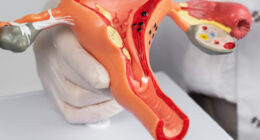Parkinson’s disease (PD) is a challenging and advancing neurological condition that impacts millions of people globally. Understanding its nuances can help in managing and living with the condition. Here are 15 essential facts about Parkinson’s disease to broaden your knowledge.
- Prevalence
More than 10 million people worldwide are affected by Parkinson’s disease, making it the second most common neurodegenerative disorder after Alzheimer’s disease.
- Age of Onset
While Parkinson’s can affect younger individuals, it is most commonly diagnosed in people over the age of 60. The risk increases with age.

- Gender Differences
Men are approximately 1.5 times more likely to develop Parkinson’s disease than women. The exact reasons behind this gender gap remain somewhat elusive.
- Motor Symptoms
The hallmark motor symptoms of Parkinson’s disease include tremors, bradykinesia (slowness of movement), muscle rigidity, and postural instability. These symptoms gradually worsen over time.
- Non-Motor Symptoms
Parkinson’s disease also presents with a range of non-motor symptoms, such as sleep disturbances, cognitive impairment, mood disorders (like depression and anxiety), and autonomic dysfunction.
- Tremors
Tremors in Parkinson’s typically begin in one hand and are more pronounced at rest. These “resting tremors” are a classic sign of the disease.
- Causes
The exact cause of Parkinson’s disease remains unknown. It is believed to result from a combination of genetic and environmental factors, including exposure to toxins and head injuries.
- Genetic Links
Approximately 10-15% of Parkinson’s cases are linked to genetic mutations. Specific genes such as LRRK2, PARK7, and SNCA are associated with an increased risk of developing the disease.

- Dopamine Deficiency
Parkinson’s disease is characterized by the degeneration of dopamine-producing neurons in the substantia nigra region of the brain. Dopamine is a neurotransmitter essential for coordinating movement.
- Diagnosis
There is no definitive test for Parkinson’s disease. Diagnosis is primarily based on medical history, a review of symptoms, and neurological examinations. Sometimes, imaging tests like DaTscan are used to support the diagnosis.
- Levodopa Therapy
Levodopa is the most effective medication for managing Parkinson’s disease symptoms. It is converted into dopamine in the brain, helping to alleviate motor symptoms.
- Deep Brain Stimulation
Deep brain stimulation (DBS) is a surgical treatment for Parkinson’s disease. It involves implanting electrodes in specific areas of the brain, which are then stimulated to reduce motor symptoms.
- Exercise Benefits
Regular exercise is highly beneficial for people with Parkinson’s disease. Activities like walking, swimming, yoga, and Tai Chi can improve flexibility, balance, and overall quality of life.
- Dietary Considerations
A healthy diet rich in fruits, vegetables, whole grains, and lean proteins supports overall well-being. Some research suggests that a Mediterranean diet may be particularly beneficial for brain health.
- Support Systems
Living with Parkinson’s disease can be challenging, but support groups and organizations such as the Parkinson’s Foundation and the Michael J. Fox Foundation offer resources, research updates, and community support to help patients and caregivers.
Understanding Parkinson’s Disease
Parkinson’s disease is a multifaceted condition that requires comprehensive management. While there is no cure, understanding these facts can empower patients and caregivers to seek appropriate treatments and make lifestyle adjustments that can significantly improve their quality of life. Staying informed and connected with support networks is crucial for navigating the complexities of this disease.
Conclusion
Parkinson’s disease impacts millions of lives, but knowledge and proactive management can make a significant difference. By staying informed about the symptoms, causes, treatments, and support available, individuals affected by Parkinson’s can lead more fulfilling lives. Whether you are a patient, caregiver, or someone seeking to learn more, these 15 facts provide a foundation for understanding and managing Parkinson’s disease.









